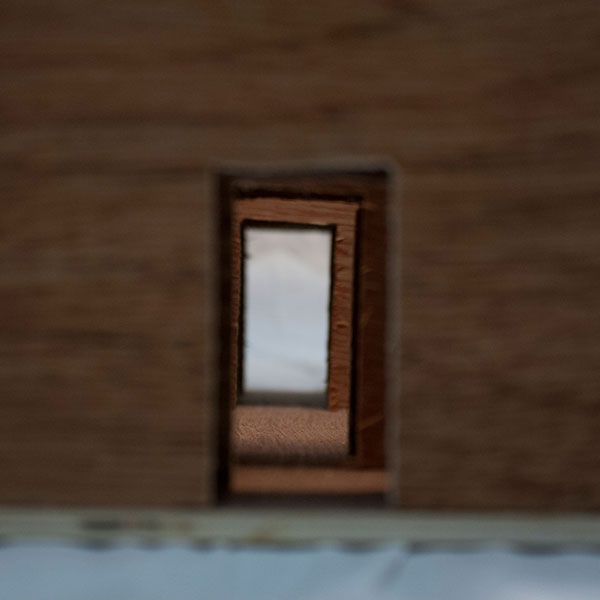Inhabitable Wall
This project is based on an idea of temporal dimension where older architecture can become something new and last through the ages. After analyzing a precedent with a partner, in this case Diocletian’s Palace in Rome, we came up with a temporal dimension diagram that mapped out different spaces and how long they lasted over time represented by line color and line weight. The drawing was accomplished using a Rhino model and also Autocad for quick drawing clean up, and Adobe Illustrator for final line weights and colors.
What interested me most about Diocletian’s palace was how people adapted and started to live in the walls. I constructed performing models of different conditions that were contained inside those walls. I called them nested walls, enfilade with altering overhead conditions, perspectival screens, and subtracting an interior geometry from an unrelated exterior geometry. I constructed these models using different types and thicknesses of plywood as well as concrete.
I used the elements from the models to develop a design for a fitness center. I chose to fill the site with a boundary condition to make the project enhance the concept of inhabitable wall. I made a series of technical drawings including a plan, site plan, and sections to show how the design operates. I used Rhino, Autocad, and Illustrator to produce these drawings.
For my final model I had a laser cut cardboard site model that I had used for early massing models. I used the cardboard to cast a plaster inverse of the site. I used plaster so that I could clean it up later with sand paper and a scrapper to get the cardboard off. Once the plaster was done, I divided it into a 3 piece mold with plywood and foam for casting the new site out of Rapidset Cement-All grout mix. I used petroleum jelly as my release agent. I then cast different heights of blocks to hold up the pieces of the building that were made of different thicknesses of plywood, Plexiglas, and grout. I made a base for the concrete cast site out of ½” plywood and cast a small pad onto it.




















